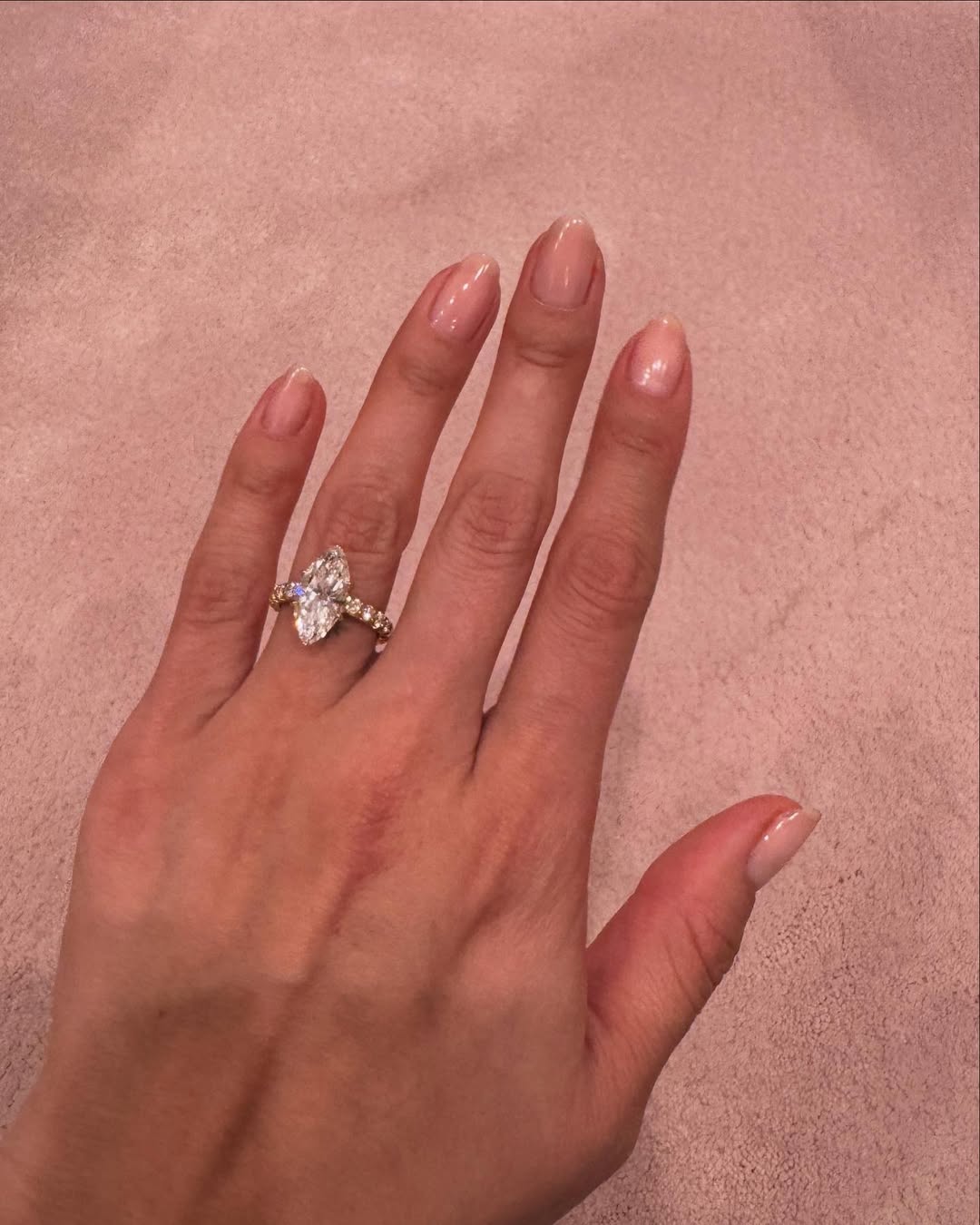On December 11, Selena Gomez shared an Instagram post with her 423 million followers of her freshly manicured hand with a ring on that finger. But it wasn’t just any ring—it was a six-carat marquise-shaped diamond engagement ring with a pavé band, given to her by Benny Blanco. “Forever begins now,” she wrote. The post received over 22.6 million likes.
A week later, Google reported that searches for marquise engagement rings were at an all-time high, surpassing round cuts for the first time ever—long the most popular cut for couples. Marquise was, and is, officially trending.
The question is: will it stay that way?
According to several jewelers, very possibly. “Whenever there is a high-profile celebrity that is engaged, there is always increased interest in the cut of their diamond,” Martin Katz, who designed Sophia Richie’s wedding band, tells Vogue. Alison Lou, who made Emily Ratajowski’s famous divorce rings, agrees: “I am sure the interest will grow over the next few months,” she says.
Others say that Gomez is just the most prominent example of an already emerging trend. “We saw an increased interest in marquise diamonds even before Selena’s engagement and overall think it’s making a resurgence,” says Stephanie Gottlieb. (Indeed, Gomez seems to have her eyes set on the diamond type for a while: in her 2015 song “Good for You”, where she croons that she’s a “marquise diamond / Could even make Tiffany jealous.”)
Why? Gottlieb and Katz both credit a shift towards more unique shapes in general—with more and more brides wanting distinctive, fashion-forward rings that the algorithm hasn’t served them a thousand times before. “Marquise engagement rings are great options for the less traditional bride,” Katz says.
What makes the marquise so standout? Its unusual yet feminine shape: “The marquise cut has an elongated, oval shape with pointed ends, making it stand out from more traditional cuts like round or princess. Its distinctive silhouette appeals to those seeking something different,” says Gottlieb.
Then there’s the optics: with its elongated cut, a marquise diamond covers more of your ring finger—giving the appearance of a larger stone. “The marquise cut is not only flattering but the unique cut’s surface area can make the diamond appear larger than its carat weight,” Lou says. “People may feel that ovals have become too common and want something that feels fresh and different. Marquises are a great alternative and have a lot of fun options for setting —whether the diamond is North/South or East/West.”
Marquise diamonds’ sudden popularity doesn’t mean they were ever out, exactly. In fact, the cut has a rich—and rarefied—history. “The shape was created in the 18th century at the request of Louis XV and has been used in jewelry throughout the 19th and 20th centuries,” Joan Boening, a jeweler specializing in antique jewelry at James Robinson, tells Vogue. The style had a particular surge in popularity during the 1960s and ’70s: Jackie Kennedy received a massive 40-carat marquise-cut diamond ring from Aristotle Onassis known as the Lesotho III. (It later sold at auction for $2.59 million.) In fact, this retro past may be another factor that led its resurgence. “People are drawn to the nostalgia and timelessness of this cut. It’s a fun mix of modern and antique,” says Gottlieb.
Inspired to shop for a marquise engagement ring of your own? Below, Gottlieb shares what you need to know about the trending style.
Marquise diamonds are all about their shape, so proportions are crucial. The ideal length-to-width ratio for a marquise diamond typically ranges from 1.75 to 2.25. A well-proportioned marquise will look balanced and symmetrical. If the ratio is too extreme (either too narrow or too wide), it can create a less flattering appearance.
One thing to be aware of with marquise diamonds is the “bowtie effect,” which refers to a shadow or dark area that can appear in the center of the stone, resembling a bowtie. This happens because of the diamond’s shape and the way light reflects off the facets. While some bowtie effect is natural and even desirable, a pronounced bowtie can detract from the diamond’s brilliance. Be sure to inspect the diamond carefully—ideally in person, to ensure the bowtie isn’t overly noticeable.
Pointed ends of a marquise diamond are more prone to chipping and damage than other shapes. When choosing a setting, make sure the points are protected, either by prongs or a bezel setting. This will help preserve the integrity of the diamond over time.
Because of the marquise cut’s many facets, inclusions can sometimes be more visible. Look for diamonds with higher clarity grades to avoid noticeable imperfections. For color, the marquise shape can hide yellowish tones better than other cuts, so you may be able to opt for a slightly lower color grade without sacrificing appearance.

